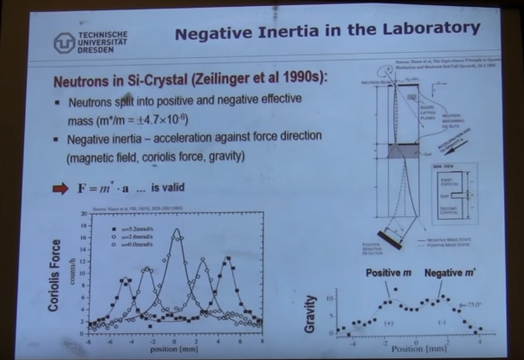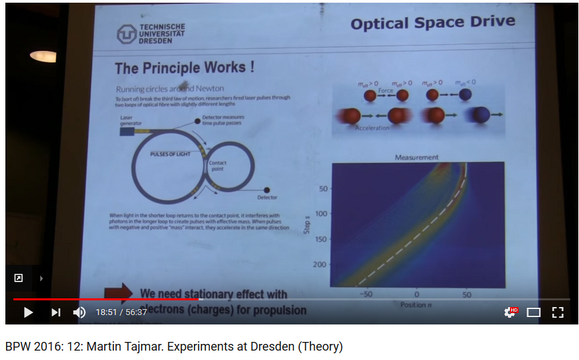Okay, it's quite clear now that you're missing the fundamental difference between the abstract and the existential. Space doesn't appear curved according to all of our direct physical observations because it's not space that those physical observations are observing, it's the behavior of stuff in space and how well an abstract analogy ( math ) predicts the behavior of that stuff.
Okay then explain to me how we can observe the geometry of space without observing the way that a perceptible form of matter or energy interacts with it. I'll wait.
Again the difference between the abstract and the existential. The leap in logic is like if someone discovered that ants accurately predicted earthquake behavior it wouldn't mean that earthquakes are caused by ant behavior. However people are prone to jumping to those sorts of conclusions. Interestingly, I just pulled that out of thin air and figured I'd look it up and guess what ... lol. Ants Lead the Way on Earthquake Prediction
Haha, that was awesome. The universe loves to f*ck with us =)
But back to the point. You seem to take exception to the process of observation and mathematical modeling at the heart of the scientific method, and yet you haven't offered an alternative.
Equivalency isn't the case in reality because Earth's gravity isn't caused by acceleration. We don't stick to the surface because we're on an ever accelerating surface hurtling through space. It purely an analogy, and equivalency in this case is synonymous with analogy.
Uhm, you understand that nobody's saying that the Earth is expanding at an accelerating rate, but that an acute geometric angle between space and time generates an acceleration field, right? Because general relativity states that, and it's been 100% accurate to the limits of our experimental precision. No other model has been presented which can predict the experimental observations. That should count for something, yes?
Since you have no idea what I'm talking about, logically, you cannot know that.
My point is that I should be able to discern what point you're making after reading your words. But I can't. And I'm a pretty bright guy. So I'm reasonably confident that the problem isn't here on the receiving end, capiche?
One doesn't need to know the existential reality of a particular situation in order to know the difference between the two concepts and from there make logical deductions about what must be the case, which is what the thought experiments I've proposed do.
No, they don't. You've convinced yourself, but your thought experiments are unconvincing on the logical grounds that I've pointed out: to wit, they can be explained in either of two ways (the manner that you favor and the manner that you don't) equally and indistinguishably. So I'm waiting for you to resolve that problem, by explaining a method to discern between them - empirically, if possible.
While that is superficially true, it does not address the context of the point made.
The point you made could be equally interpreted in either of two ways, which are in direct conflict. So you've failed to provide a discerning mechanism between them. That's not my problem - it's yours. I'd be psyched if you could resolve it, but frankly I don't think t's possible, and I think it's weird that you're so confident that one interpretation is correct over the other, when the observable evidence could be interpreted both ways with equal validity.
Philosophy, logic, and critical thinking don't always require observation and measurement in order to provide a proof.
Holy tamole - if you actually mean this seriously, then we'll never achieve any kind of consensus, because meausrement and observation are the *only rational foundation* for defining a consensual reality. And it would be madness to rely upon philosophy in lieu of empirical science - the Greeks tried that and they stalled out at the concept of the gear.
A curved space analogy just says that the behavior of certain things in space can be calculated by thinking of space as curved and developing math around that model. However for the reasons I pointed out in the thought experiments, space cannot actually be curved.
Your thought experiments don't prove that space cannot be curved. And all of the emprical evidence available confirms that it *is* curved. You only proved that if you subtract the curvature from the observations, then space doesn't appear to be curved. Do you see the problem there? God I hope so.
It is just as real an observation to point out that the apparent and actual positions of an object are different and logically deduce from that situation that it's not space that's curved, but the path of the light.
I simply pointed out that both interpretations explain the data perfectly, which is true. There's no logical basis for choosing one interpretation over the other. And it kinda freaks me out that you can't see that. Believing that your interpretation is correct when both interpretations explain the data perfectly, is not a valid basis for choosing one interpretation over the other.
Also, you seem to be allergic to the time dilation data, which apparently you can't explain with your "flat spacetime" idea. Tell me right now why time passes more slowly upon the Earth than in space - which is an observed fact - if spacetime geometry is not curved around the Earth. Take your time.
the behavior of stuff inside that volume can be predicted using formulas that are based on math that uses the concept of curved space, which is just fine, but from a God's eye view, a perfectly straight line can still be drawn between any given object, which means space itself cannot be curved.
"from a God's eye view?" Please tell me that you're joking. Because I don't have the benefit of "a God's eye view" of anything, and I'm frankly mortified that you seem to think that you do. We humans only have our sense perceptions - our observations and our measurements, to determine the nature of our reality. That's it. If you're relying upon some special divine power to discern a more fundamental ontological truth about perceived reality, then the only people you'll ever be able to convince of your elevated perspective, are the chosen few who are also endowed with this special gift of "a God's eye view."
Because us mere mortals who are doomed to perceive reality through the mere human's eye view, have noticed that the shortest distance between two points in not in fact a straight line, but rather a geodesic, which is perfectly defined by the general theory of relativity that describes spacetime as curved around massive bodies. And we depend upon this empirical truth to send probes to other worlds.
Geodesic - Wikipedia
The fact that you can draw a straight line between two points, on a flat star map for example, doesn't prove that space isn't curved - it only proves that you can't see a 4D curvature on a 2D map. The only valid test to find out if space if flat, is if the shortest distance between two points is a straight line. But we know that it isn't, because it takes more energy to follow a straight line from point A to point B, than it takes to follow the geodesic defined by the spacetime curvature of the gravitational field.
Granted, this isn't definitive proof that spacetime is actually curved, because it's possible in principle to model the geodesic as a product of quantum phenomena acting upon matter and energy, and there's no empirical or logical method to determine which model is correct. But we know that the curved spacetime model works perfectly to within the precision of all empirical observations, and yet nobody has devised a working quantum gravity model that can boast the same level of predictive accuracy (or even work within the content of quantum mechanics), so the prevailing victor is clearly the curved spacetime model, at least until somebody can offer an equivalent or superior alternative theory.
That's all I'm saying. Whew.
Honestly it's a bummer to debate the validity of GR - there's so much experimental and theoretical evidence available online already to support it, that it's a really tedious and profitless exercise to debate it again here. Nobody else wants to trudge through this kind of debate. So if you want to bang your head against the wall some more, then let's move it
back where this all started, so we can focus on more forward-moving concepts here in this thread.
Mucho gracias, amigo.




